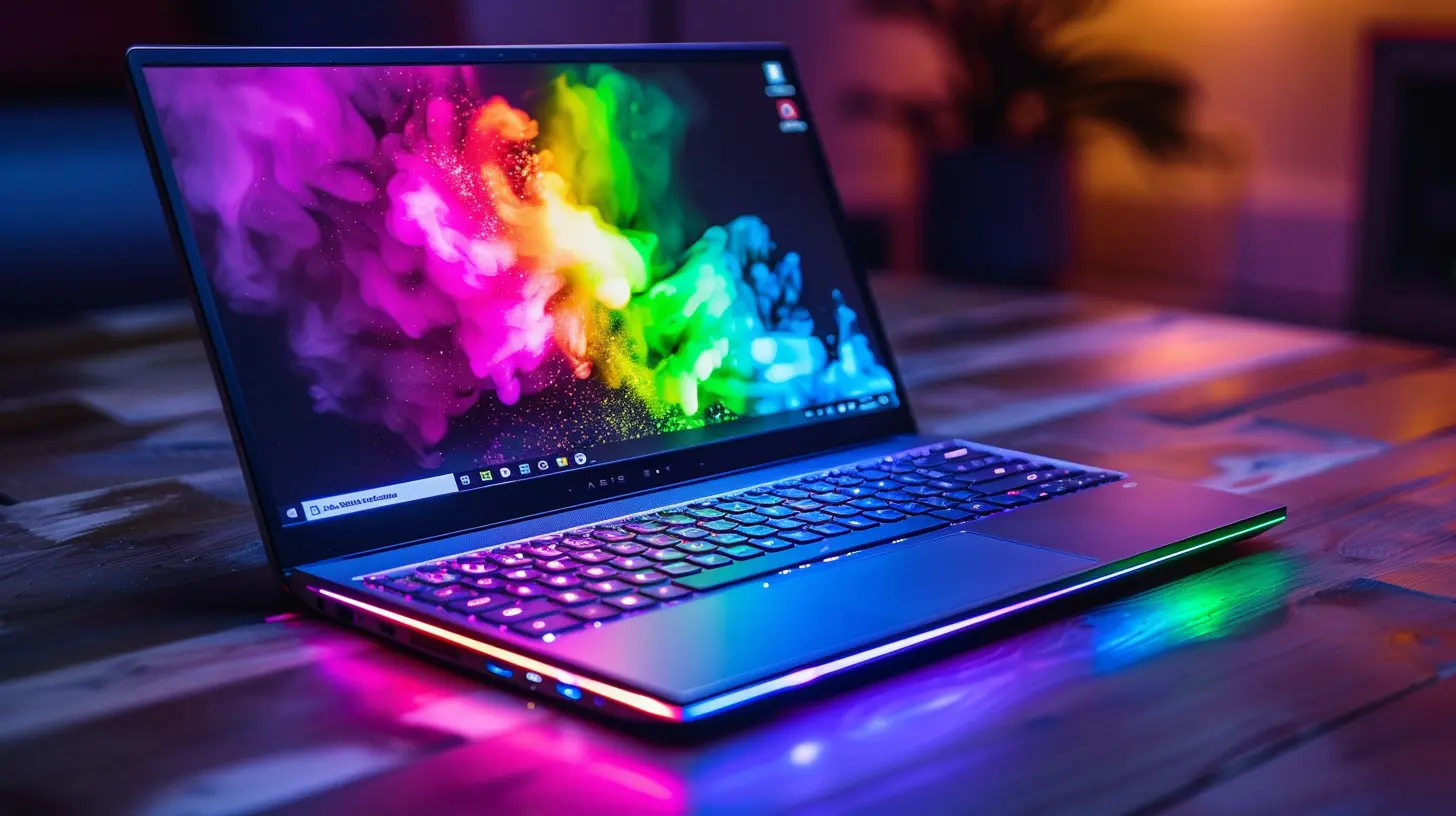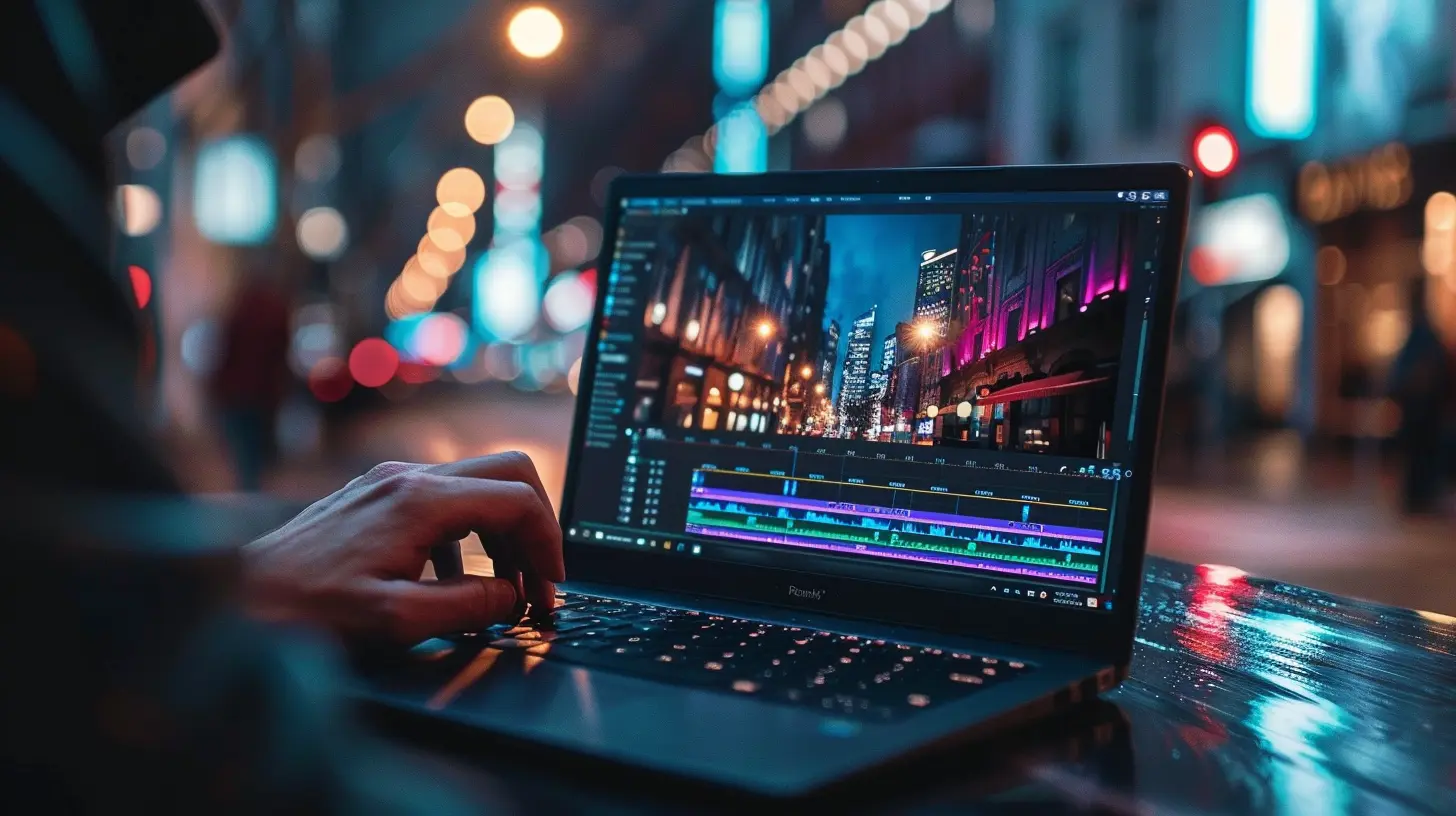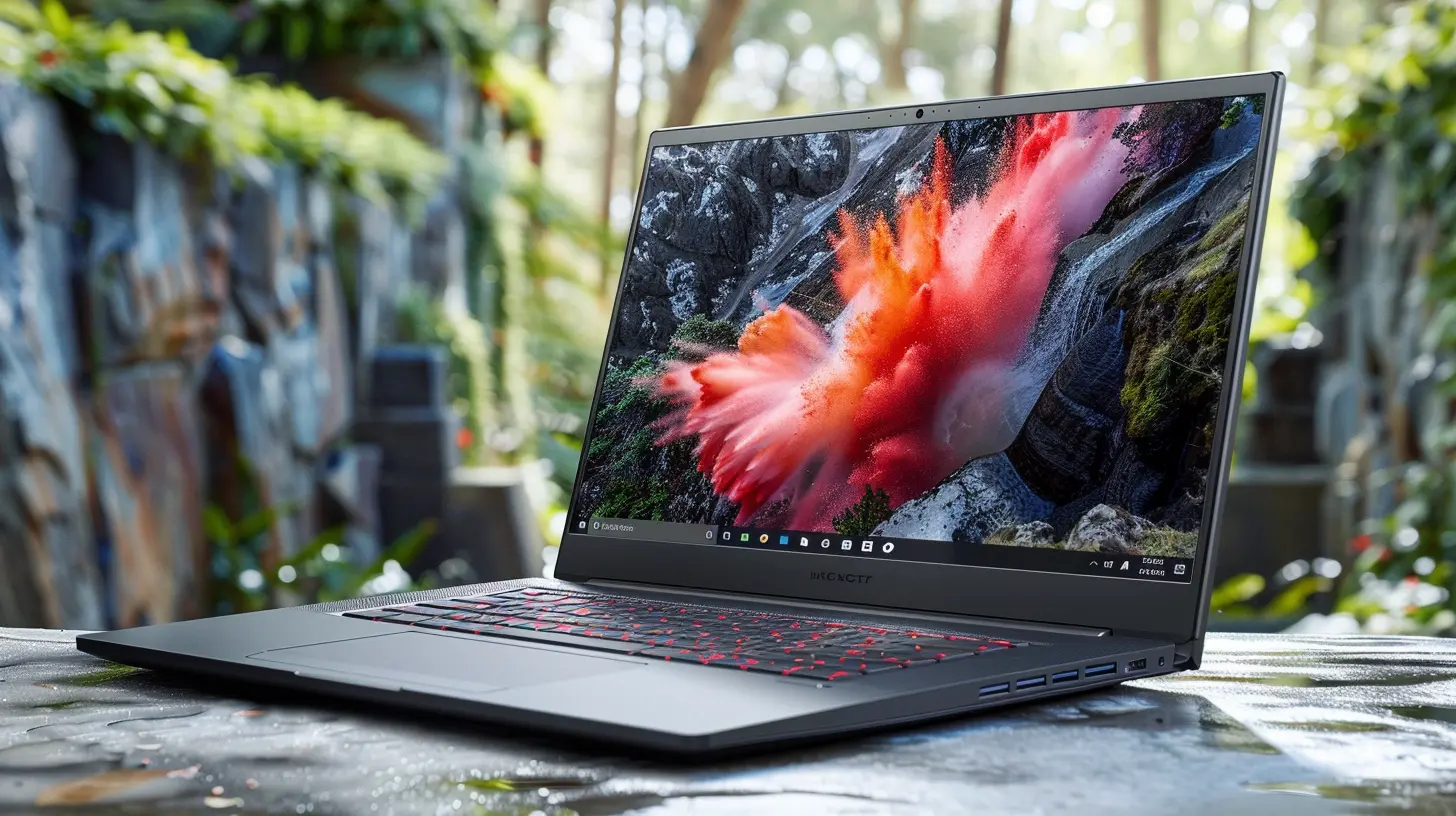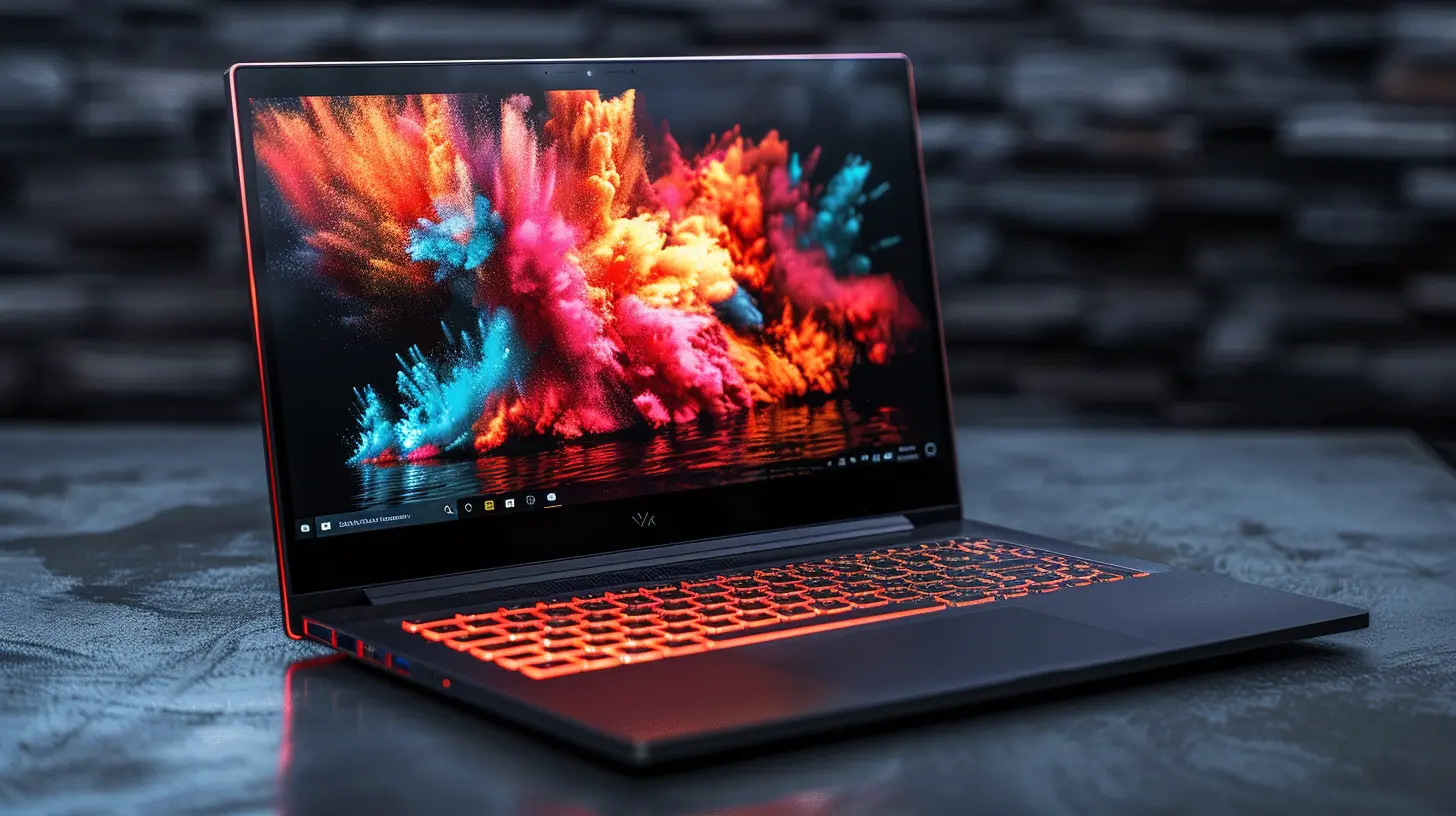The Best Ultrabooks for Graphic Design and Photography
24 September 2025
When it comes to graphic design and photography, your choice of a laptop can either supercharge your creativity or leave you frustrated. You want something that's sleek and portable but also powerful enough to handle demanding software like Adobe Photoshop, Illustrator, or Lightroom. Enter ultrabooks. These slim and light laptops pack a punch, offering the perfect balance of performance, portability, and battery life.
But with so many options out there, choosing the best ultrabook for graphic design and photography can be a bit overwhelming. How do you know which one is right for you? Well, worry not! I’ve done the heavy lifting and compiled a list of the best ultrabooks that will make your creative projects smoother than ever.
Let's dive in!

What to Look for in an Ultrabook for Graphic Design and Photography
Before we get into the list of the best ultrabooks, let’s talk about what you should be looking for when picking one. These are the key features that every designer and photographer should prioritize.
1. Display Quality and Resolution
For design and photo editing, a sharp and color-accurate display is crucial. You’re going to need a screen that can show true-to-life colors and high resolution for those intricate design details. Look for at least a 1080p resolution, though 4K displays are becoming more common and highly recommended, especially for photographers who want to see every pixel of their high-res images.2. Processor (CPU)
The processor is the brain of your ultrabook. For graphic design and photo editing, you’ll want something fast and powerful. Intel’s Core i5 or i7 processors are usually the go-to choices, but if you can splurge on an Intel Core i9 or an equivalent AMD Ryzen 7 or 9, even better. A powerful CPU ensures that your apps run smoothly without glitches or delays.3. Graphics (GPU)
While integrated graphics can handle basic editing, a dedicated graphics card (GPU) will make a world of difference, especially when working with large files or 3D designs. NVIDIA's GTX or RTX series are popular choices, but AMD’s Radeon GPUs are also solid contenders.4. RAM
The more RAM, the better. Most graphic design and photo editing software are resource-heavy, and multitasking between them can quickly eat up your memory. A minimum of 8GB of RAM is essential, but if you can, aim for 16GB or even 32GB for more intensive tasks.5. Storage (SSD)
You’re going to need fast storage for handling large photo and design files. SSDs (Solid-State Drives) are a must-have because they’re significantly faster than traditional HDDs. Look for at least 512GB of storage, though upgrading to 1TB or more will give you extra breathing room.6. Portability and Battery Life
As a creative professional, you’re likely always on the move—whether it’s working from a coffee shop, traveling for a photoshoot, or meeting clients. That's why ultrabooks are perfect. They are thin, lightweight, and usually boast great battery life. A solid battery life of 8-10 hours will ensure you can work on the go without constantly searching for a power outlet.7. Connectivity and Ports
You’ll need a good variety of ports. USB-C, USB-A, Thunderbolt 3 or 4, and an SD card reader are all useful for connecting external monitors, hard drives, or transferring photos from your camera.
The Best Ultrabooks for Graphic Design and Photography
Now that you know what to look for, let’s explore the best ultrabooks on the market that cater to graphic designers and photographers.1. Apple MacBook Pro (14-inch, M1 Pro)
If you’re a creative professional, it’s no surprise that Apple’s MacBook Pro is at the top of the list. The 14-inch MacBook Pro with the M1 Pro chip is a powerhouse for graphic design and photography.- Display: 14.2-inch Liquid Retina XDR display with 3024 x 1964 resolution and 1,000 nits brightness. The color accuracy is unmatched, making it perfect for photo editing.
- Processor: Apple M1 Pro chip with an 8-core CPU and 14-core GPU. This is a beast when it comes to handling multiple design apps simultaneously.
- RAM: 16GB (configurable up to 32GB)
- Storage: 512GB SSD (configurable up to 8TB)
- Battery Life: Up to 17 hours
- Weight: 3.5 lbs
The MacBook Pro’s Retina display is a dream for photographers and designers alike. And let’s not forget Apple’s ecosystem—macOS works seamlessly with creative software like Adobe Creative Cloud. This is a go-to for professionals who want the best of the best.
2. Dell XPS 15 (2022)
Dell’s XPS series is known for its stunning displays and powerful performance, and the XPS 15 is no exception. This is a solid choice for anyone looking for a Windows alternative to the MacBook Pro.- Display: 15.6-inch OLED display with a 3456 x 2160 resolution. The OLED panel delivers deep blacks and vibrant colors—perfect for photo editing.
- Processor: Intel Core i7-12700H (12th Gen)
- Graphics: NVIDIA RTX 3050 Ti
- RAM: 16GB (configurable up to 64GB)
- Storage: 512GB SSD (configurable up to 2TB)
- Battery Life: Up to 13 hours
- Weight: 4.3 lbs
The Dell XPS 15 is one of the best ultrabooks for graphic design and photography due to its stunning 3.5K OLED display and strong performance. Plus, the inclusion of an NVIDIA RTX 3050 Ti makes it capable of handling 3D rendering and more intensive graphic tasks.
3. Microsoft Surface Laptop Studio
If you’re looking for versatility in your ultrabook, the Microsoft Surface Laptop Studio could be the one for you. It’s designed for creators who want a flexible design that can switch between a traditional laptop and a tablet-like studio mode.- Display: 14.4-inch PixelSense Flow touch display with a 2400 x 1600 resolution
- Processor: Intel Core i7-11370H
- Graphics: NVIDIA GeForce RTX 3050 Ti
- RAM: 16GB (configurable up to 32GB)
- Storage: 512GB SSD (configurable up to 2TB)
- Battery Life: Up to 18 hours
- Weight: 3.8 lbs
The Surface Laptop Studio’s 2-in-1 form factor is ideal for artists who want to sketch directly on the screen. Combined with the Surface Pen, it’s a great choice for illustrators and designers who want a more hands-on approach.
4. Asus ZenBook Pro Duo 15 OLED
If you’re looking for something truly unique, the Asus ZenBook Pro Duo 15 OLED offers a dual-screen setup that’s perfect for multitasking. Imagine having your main editing workspace on one screen while your tools and palettes are on another.- Display: 15.6-inch 4K OLED main display with a 3840 x 2160 resolution + 14-inch 4K secondary screen
- Processor: Intel Core i9-11900H
- Graphics: NVIDIA GeForce RTX 3070
- RAM: 32GB
- Storage: 1TB SSD
- Battery Life: Up to 8 hours
- Weight: 5.16 lbs
The dual-screen setup is a game-changer for multitasking, especially when working with complex design files or editing photos. The OLED display offers stunning color accuracy, making it a top contender for creative professionals.
5. HP Spectre x360 (2022)
The HP Spectre x360 is a versatile ultrabook that combines sleek design with strong performance. It’s a 2-in-1, meaning you can flip the screen all the way around to use it as a tablet. If you’re into sketching or doing light design work, this is the ultrabook for you.- Display: 13.5-inch OLED display with 3000 x 2000 resolution
- Processor: Intel Core i7-1255U (12th Gen)
- Graphics: Intel Iris Xe integrated graphics
- RAM: 16GB
- Storage: 1TB SSD
- Battery Life: Up to 16 hours
- Weight: 3 lbs
The HP Spectre x360 is perfect for those who want a lightweight ultrabook that doesn’t compromise on performance. The OLED display and 3:2 aspect ratio give you more vertical screen real estate, making it easier to work on long design projects or scroll through photo libraries.
Conclusion: Which Ultrabook is Best for You?
The best ultrabook for graphic design and photography ultimately depends on your specific needs. If you’re heavily invested in the Apple ecosystem, the MacBook Pro is a no-brainer. If you prefer Windows and want a stunning display, the Dell XPS 15 is an excellent choice. For something more versatile, the Microsoft Surface Laptop Studio offers flexibility, while the Asus ZenBook Pro Duo provides a unique dual-screen experience. Lastly, the HP Spectre x360 is perfect for those who value portability without sacrificing performance.Whatever you choose, make sure it aligns with your workflow and creative needs. Happy designing and photographing!
all images in this post were generated using AI tools
Category:
UltrabooksAuthor:

John Peterson
Discussion
rate this article
1 comments
Oscar Hernandez
Great insights! These ultrabooks will elevate any designer's creative process!
September 26, 2025 at 2:42 AM

John Peterson
Thank you! I'm glad you found the insights valuable. Ultrabooks truly enhance creativity for designers!


